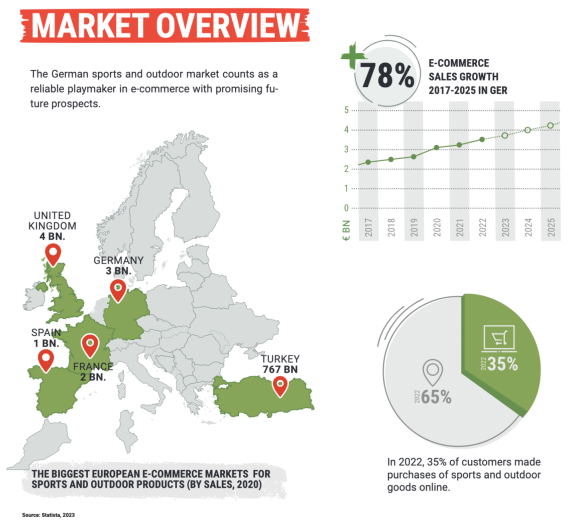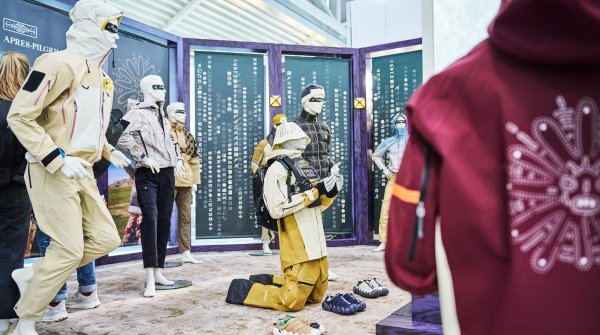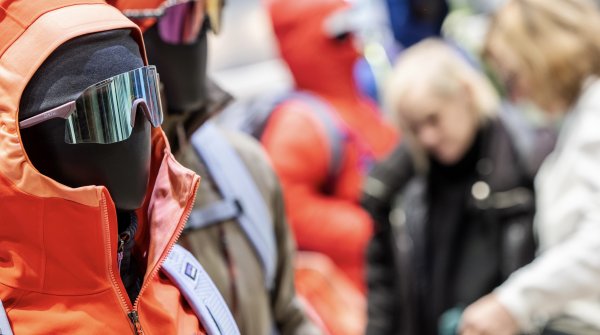- eCommerce becomes an online experience
- Successful dialog between brand and people
- Online retail: Getting under the skin with advice
- Customer Experience: The experience does not end with the purchase
- Identity: Viewing the brand like a human being
- Storytelling and artificial intelligence in the online store
The German sports and outdoor market counts as a reliable playmaker in eCommerce: In 2017, sales in Germany were just over two billion euros, according to Statista. By 2022, it had increased - due to the Corona pandemic - to 3.5 billion euros. Forecasts even put eCommerce sales at over four billion euros by 2025. That would correspond to sales growth of 78 percent - in just eight years.

But the bigger the pie gets, the more online retailers, manufacturer brands and retailer brands compete for the pieces. To perform successfully in eCommerce, Johannes Maur and Johannes Schüßler, Managing Directors of the brand agency Pascher+Heinz, therefore recommend a holistic brand approach in the areas of strategy, identity and customer experience.

According to Johannes Maur, despite the steady growth in sales, eCommerce is still in its infancy: "We are currently experiencing the transition from offline retailing to online experience. A smooth digital experience is becoming increasingly important and is a prerequisite for customers to make a purchase. At the same time, the digital space offers many opportunities to make the purchase a real experience.
In the sports and outdoor market in particular, more and more purchases are being made digitally, emphasizes Johannes Schüßler. According to him, the industry is developing rapidly, which has been further fueled by the pandemic. "Manufacturer brands are becoming more and more present, in some cases also selling direct-to-consumer and thus competing with retailers. Of course, retailers have to react and defend their role as independent sellers."
It is important, Schüßler emphasizes, to analyze and understand the target group and its needs. But it is also helpful to keep a close eye on the competition. Compagnon Maur adds, "Ultimately, it's about enabling a successful dialog between brand and people." This dialog takes place "naturally" in the experience that people have with the brand. Whether it is successful in the long term depends in particular on whether the experience is also consistent with the identity and the overarching strategy of the brand.

"Consultation has always played a major role in this area," Maur states, because "the functionality and performance of the products are crucial for their subsequent use." After all, he says, the products are worn close to the body and used during intense experiences. "They therefore also have a great emotional value and should express a personal attitude." According to him, customers in the outdoor market want to experience a customer experience that combines fun, rational facts and an emotional brand story and makes it tangible: "The expectations are therefore extremely high."
Who hasn't experienced this: The running shoes ordered online are pleasing, they fit perfectly and every run is fun. But then suddenly a seam tears, communication with customer service is exhausting, and suddenly you stumble on what was just a perfect customer journey. Next time, you might try a different online retailer, and possibly a different brand.

That's why Maur stresses that it's not just the buying experience as such that has to be satisfactory, but also the product and the appearance of the brand in general. According to him, this applies not only to manufacturers, but also to retailer brands. After all, the customer experience in the buying process is only one part of an overarching experience "that I experience with the brand as a customer." It begins long before the purchase and does not end there. "A holistic experience first creates awareness for the brand and the product, and then connects a concrete image with it. The purchase of a single product should not be the goal, but rather a loyal connection with the brand beyond the purchase."
"We work in the spirit of identity-based brand management and treat a brand like a person," Maur explains. According to him, the image of a brand must be built up in a sustainable and positive way. Furthermore, the benefits of the products must be clearly communicated and firmly associated with the brand. This is the only way to establish a long-term relationship with customers.
These requirements apply in particular to e-commerce. A good online store today has to provide comprehensive advice, at the same time convey a feeling for the brand and the product, and make it easy for customers to decide which offer is right for them, says Schüßler. The focus here is on the individual expectations of those willing to buy. According to the brand coach, the store's technological possibilities should be exploited to tailor the customer experience even better to the respective target group and its needs, thus making the buying process an experience. "I'm thinking here, for example, of the use of mixed reality as the basis for a completely new shopping experience or the use of artificial intelligence in advising and compiling product offers." Many functions and services are already so established in stores that they represent hygiene factors for customers. This has made it difficult for retailers to differentiate themselves. His tips: new and unusual services and experiences with the brands.
His colleague Maur notes, "We are already seeing, for example, that products are more closely associated with storytelling and concrete experiences." In his eyes, this aspect will become increasingly important "in order to be able to convey the benefits of the product in a way that can be experienced." For this, high-quality content and real, authentic stories are essential.
 Sports BusinessSustainable ideas for store design
Sports BusinessSustainable ideas for store design Sports BusinessSports retail in transition: the future playbook for 2025
Sports BusinessSports retail in transition: the future playbook for 2025
- ISPO awards
- Mountain sports
- Bike
- Design
- Retail
- Fitness
- Health
- ISPO Job Market
- ISPO Munich
- ISPO Shanghai
- Running
- Brands
- Sustainability
- Olympia
- OutDoor
- Promotion
- Sports Business
- ISPO Textrends
- Triathlon
- Water sports
- Winter sports
- eSports
- SportsTech
- OutDoor by ISPO
- Heroes
- Transformation
- Sport Fashion
- Urban Culture
- Challenges of a CEO
- Trade fairs
- Sports
- Find the Balance
- Product reviews
- Newsletter Exclusive Area
- Magazine





